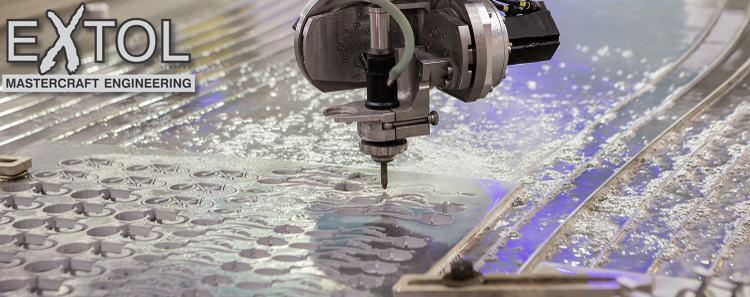There are many methods and machines capable of cutting parts, but one of the most effective, efficient and affordable approaches is known as water jet cutting. Water jet cutting is the preferred operation for many manufacturers looking to cut high-quality parts without adverse material effects that can come into play when relying on other cutting methods.
A water jet uses a concentrated mixture of water and garnet (fine sand) that is sprayed through a small orifice at extremely high pressure (50,000-60,000 psi.) The result is an extremely fine cutting stream, capable of passing through nearly any type of material with little hardness/thickness restrictions. As with other CNC style machines, a water jet uses CAD data to follow designated tool paths as well as varying cut types/qualities to adjust for speed, depth of cut, etc.
The water jet is an incredibly effective piece of machinery, and it is gaining popularity across the industry as more manufacturers and engineers are learning of its unique capabilities and benefits. Below, we will dive deeper into several of the advantages of water jet cutting, as well as how the water jet stacks up against more conventional cutting options.
A water jet uses a concentrated mixture of water and garnet (fine sand) that is sprayed through a small orifice at extremely high pressure (50,000-60,000 psi.) The result is an extremely fine cutting stream, capable of passing through nearly any type of material with little hardness/thickness restrictions. As with other CNC style machines, a water jet uses CAD data to follow designated tool paths as well as varying cut types/qualities to adjust for speed, depth of cut, etc.
The water jet is an incredibly effective piece of machinery, and it is gaining popularity across the industry as more manufacturers and engineers are learning of its unique capabilities and benefits. Below, we will dive deeper into several of the advantages of water jet cutting, as well as how the water jet stacks up against more conventional cutting options.

 RSS Feed
RSS Feed